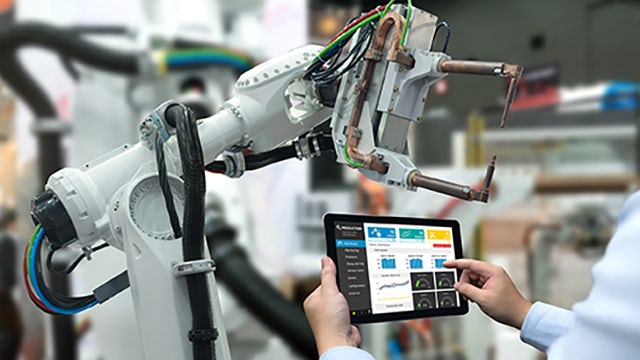Welcome to your digital future
Your digital transformation starts with software as a service (SaaS). Innovate without limits when you give your team access to on-demand functionality. Learn about Siemens Xcelerator and visit our Siemens Xcelerator Software for industry blog to learn more about our cloud services.
Accelerate digital transformation
Siemens Xcelerator is a comprehensive, integrated portfolio of software, services and application development platform designed to help companies become digital enterprises. These cloud-based solutions are available via Siemens Xcelerator as a Service to make digital transformation happen faster.
Flexible
Empower teams, regardless of project scope, with on-demand collaboration on a platform that securely connects data across engineering domains and solutions. The freedom to innovate is yours when you can tap into advanced software.
Accessible
Businesses of all sizes can access the tools they need, when they need them, ensuring teams work from a single source of truth from anywhere, at any time. Accessibility breaks down silos and improves efficiency.
Scalable
Our SaaS-based cloud solutions enable all industries and markets to rapidly scale and adapt to dynamic business environments. Implement new technologies quickly and cost-effectively based on your needs.
Access the power of Siemens Xcelerator as a Service
With Siemens Xcelerator as a Service, you can design products faster, take them to market sooner and optimize with each iteration.
Regardless of company size or industry, you can leverage our advanced, cloud-based technology, both on- and off-premises, to turn inspiration into innovation.
Enhance productivity with SaaS industry apps
Access our flexible, purpose-built, cloud-native applications – anywhere, anytime. Small and medium-sized businesses can now scale, collaborate and enhance productivity across all teams, suppliers and customers with easy-to-use cloud manufacturing software for the most basic to complex cloud engineering solutions.

View Siemens Xcelerator products
Execute multiple cloud-based computing and software deployment models with our world-renowned software offerings available on the cloud. Our cloud-ready portfolio serves a variety of industrial and commercial customers and allows dedicated teams to build and scale at a pace that easily fits their business goals and objectives via SaaS applications.

Access through the cloud, anytime, anywhere
What does it mean to be cloud-connected? Your team gains instant access from anywhere, anytime, via internet browser. Access real-time data and run, test and simulate complex industrial challenges. Better utilize our comprehensive digital twin, and enjoy the latest software and data security offerings. Amazon Web Services (AWS), our partner, offers a variety of Siemens cloud-connected solutions.

Digital transformation: what do the experts say?
Watch as experts discuss Siemens Xcelerator cloud and the benefits of Saas, cloud computing in business, and implementing the best cloud management software and digital practices within any organization.
Siemens Xcelerator video playlist
1 / 7
Siemens Xcelerator video playlist
1 / 7
Visit the Siemens and AWS partnership website
Digital transformation is now more accessible, flexible and scalable with the Siemens and AWS partnership. The collaboration between the leading industrial software company and cloud services provider plays a key role among a diverse list of customers across a variety of industries embracing digitalization.
Discover how Siemens Xcelerator as a Service gives your teams the freedom to create without limits.

Learn what this best-in-class technology can do for you
Transform with best-in-class artificial intelligence (AI) and machine learning (ML) technology, electronic design automation (EDA) cloud offerings, Industrial Internet of Things (IIoT) and low-code application platform capabilities.
Any company in any industry can leverage our advanced technology.











